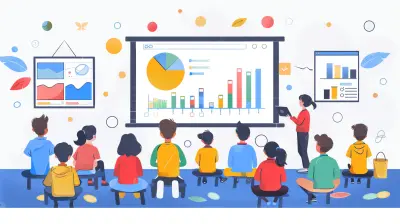The Role of Open Educational Resources in Higher Education
28 June 2025
Ah, higher education—a mystical land where students drown in debt while professors preach about the importance of critical thinking. But wait, what if I told you that there’s a way to access top-tier learning materials without selling a kidney? Enter Open Educational Resources (OER), the unsung heroes of academia that nobody talks about (because, let’s be honest, traditional publishers don’t want you to know).
So, what’s the big deal with OER? And why should you care? Let’s dive in and break it down with a healthy dose of sarcasm, shall we?

What Are Open Educational Resources (OER)?
Before we go on a rollercoaster ride of academic enlightenment, let’s define our star of the show. Open Educational Resources are free, openly licensed materials that educators, students, and institutions can use for teaching, learning, and research. That means textbooks, course materials, videos, tests, software, and even entire courses—no hefty price tags required.Yes, you read that right. Free. As in zero dollars. No more paying $300 for a chemistry textbook that you’ll open exactly three times before realizing you could’ve just Googled everything.

The Benefits of OER in Higher Education
Now that we know what OER is, let’s get to the juicy part—why should universities and students actually care? (Spoiler: because it makes education better and cheaper.)1. Affordability: Say Goodbye to Ridiculous Textbook Prices
Ever wonder why textbooks are so expensive? Because publishers know you have to buy them. It’s like selling water in a desert—no competition, high demand, and a guarantee that you'll be broke by the end of the semester.OER eliminates this nonsense by making academic resources free and accessible. No more taking out a loan to afford that "new edition" that changed three words and rearranged a few chapters.
2. Accessibility: Because Knowledge Shouldn’t Have a Paywall
Education is supposed to be a right, not a privilege available only to those with deep pockets. With OER, students worldwide—whether in a prestigious university or a tiny village with spotty internet—can access quality learning materials without financial barriers.Let’s be real: the internet has democratized information. If you can binge-watch cat videos for hours, why shouldn’t you also be able to access free learning resources?
3. Customization: Professors Can Finally Make Learning Exciting
Raise your hand if you’ve ever read a textbook that was so mind-numbingly boring, you questioned your life choices. (Yep, me too.) The good news? OER allows professors to remix, customize, and update materials to fit their students' needs.No more outdated examples from the early 2000s. Professors can modify content, add relevant case studies, or even insert memes—we all know humor is the key to retention.
4. Collaboration and Innovation: Because Two Brains Are Better Than One
With OER, educational institutions can share resources, improve content quality, and collaborate globally. Imagine a world where universities work together rather than competing for tuition dollars—wild, right?Professors can refine each other’s work, add improvements, and keep content fresh. Instead of reinventing the wheel, they can build Ferraris of knowledge (or at least a decent Honda Civic).
5. Lifelong Learning: Because Education Shouldn’t Stop at Graduation
Once you graduate, your access to university resources often disappears faster than your motivation to wake up early. But with OER, learning doesn’t have to stop when your diploma arrives in the mail.Whether you're switching careers, upskilling, or just a curious soul hungry for knowledge, open resources keep the doors of learning wide open—no tuition fees required.

The Challenges of Implementing OER (Because Nothing Comes Easy)
Alright, time for some real talk. As amazing as OER sounds, it’s not all rainbows and unicorns. There are a few hurdles that make widespread adoption, well, complicated. Let’s break them down.1. Resistance from Traditional Publishers (Shocking, Right?)
Surprise, surprise! The people making billions from expensive textbooks aren’t exactly thrilled about free alternatives. Publishers argue that OER lacks quality control—because obviously, only their overpriced books contain the secrets to true knowledge.2. Lack of Awareness: If No One Knows, No One Uses It
Many educators and students have never even heard of OER. Why? Because institutions don’t always promote it, and let’s be honest, marketing isn’t exactly academia’s strong suit.If universities made half the effort to promote OER as they do their overpriced meal plans, we’d already be living in an educational utopia.
3. Technology Barriers: The Digital Divide Is Real
Sure, OER is online-based, but what about students in areas with limited internet access? Not everyone has the luxury of stable Wi-Fi, and without reliable tech infrastructure, free digital resources are just a distant dream.Until universal internet access becomes a reality (cough governments, do your job cough), this remains a challenge.
4. Perceived Lack of Credibility
Some educators hesitate to use OER because they assume free equals low quality. But let’s be honest—some commercial textbooks are just glorified Wikipedia pages with a fancier font.The truth? Many OER materials undergo rigorous peer review processes, and in some cases, they’re more up-to-date than traditional textbooks. But hey, old habits die hard.

The Future of OER in Higher Education
Like it or not, OER is here to stay. As more institutions embrace open resources, we’re moving toward a future where education is actually affordable, accessible, and adaptable. (Wild concept, huh?)What Needs to Happen?
- Institutional Support – Universities need to actively promote and integrate OER into their curricula.- Technology Investments – More efforts to close the digital divide = more students benefiting from OER.
- Cultural Shift – Professors and educators need to see OER as credible, valuable assets rather than “freebies” unworthy of academia.
Conclusion
So, what have we learned today? OER is basically the Robin Hood of education—taking knowledge from restrictive paywalls and giving it to the people, free of charge. Sure, there are challenges, but the potential benefits far outweigh them.If higher education truly values accessibility, affordability, and innovation (and not just making money), then OER is the future. So, next time someone complains about textbook costs, send them a link to an open resource and watch the magic happen.
all images in this post were generated using AI tools
Category:
Open Educational ResourcesAuthor:

Anita Harmon
Discussion
rate this article
1 comments
Ramos
Empowering access enhances educational equity.
July 21, 2025 at 4:57 AM

Anita Harmon
Thank you for your insight! I completely agree—empowering access through open educational resources is crucial for achieving educational equity.


